
Conservation Canines - Helping to Study Moose
Thursday, December 7, 2017
Mary Godnick - Marketing and Fund Development Assistant
While canines and wildlife are generally a bad mix, in the Adirondacks, a group of researchers is currently working with the Conservation Canine (CK9) program as part of a multi-year study on New York State moose populations. Conservation Canines is a non-profit organization based in Washington, D.C. that trains dogs and handlers to conduct wildlife research. We recently had the opportunity to chat with Angela Fuller, the Unit Leader at the New York Cooperative Fish And Wildlife Research Unit at Cornell University, about the research and scat detection surveys they are conducting with Conservation Canines.
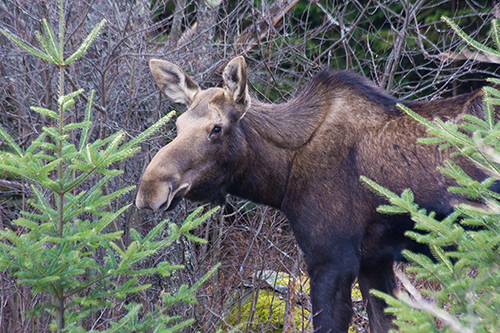
Studying New York State Moose Populations
This multi-year study, made possible by Conservation Canines, is looking to establish a baseline of data on New York State moose populations since the recent recolonization in the 1980’s. They hope to be able to estimate population density through non-invasive genetic testing by collecting fecal samples from the field. This is where Conservation Canines comes in. This program has specially trained dogs that work off-leash in the field to alert researchers and their handler when they find moose scat. Then the dogs enjoy a game of fetch as their reward. Pictured below is Hiccup - one of the Conservation Canines in action in the Adirondacks.
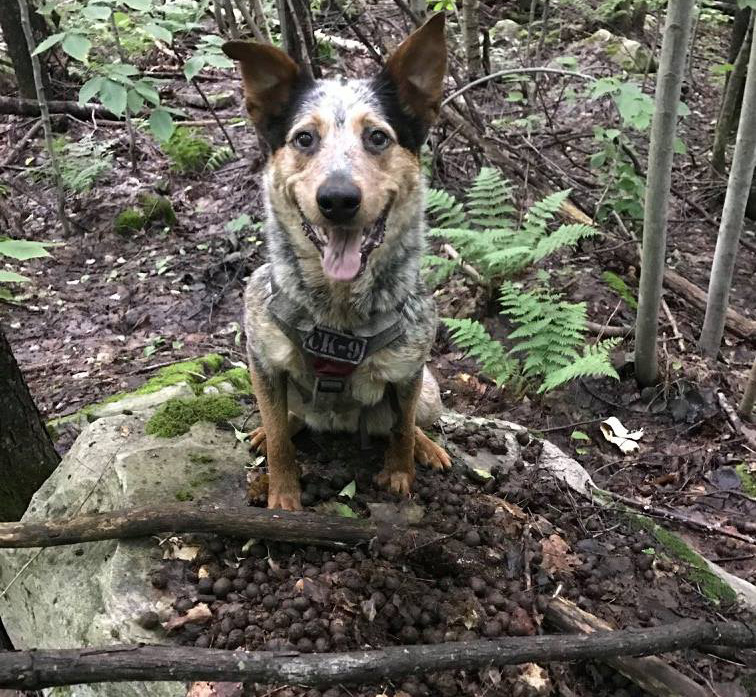
Other areas of the study will examine available moose forage to estimate nutritional carrying capacity, evaluate parasitic threats to moose, plan for climate change scenarios, and address stakeholder concerns for moose in New York. This research is being done in cooperation with the Wildlife Conservation Society (WCS), State University of New York of Environmental Science and Forestry (SUNY ESF) and Cornell University. This data will be used to inform the New York State Department of Environmental Conservation (DEC) in development of a management plan for the species in the future.
What Does a Conservation Canine do?
Conservation Canines recruit dogs from animal shelters and pet owners that can no longer take care of their dogs. What they look for is drive. The dogs need to want to please the handler and be excited to work. Pictured below is one of the Conservation Canines in action in the Adirondacks - Hiccup, and its handler Suzie Marlow.
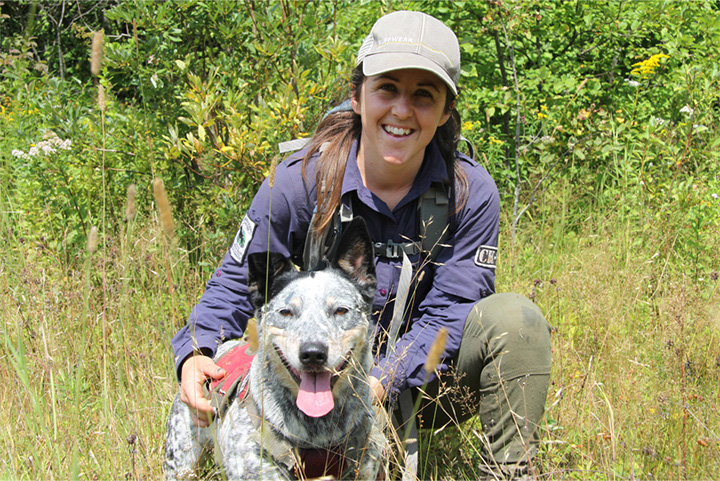 Hiccup and his handler Suzie Marlow
Hiccup and his handler Suzie Marlow
Above and beyond “drive,” the dogs must exhibit high energy and stamina, but most importantly an obsessive fixation on a ball. This fixation is the main source of motivation for the dogs to perform their tasks. The dogs' training lasts anywhere from weeks to months, and individuals can learn up to a dozen different scents. To train ADK-ready research dogs, Cornell researchers send scat samples to CK9’s in Washington so that they could train the dogs on the specific scent from our moose here in New York.
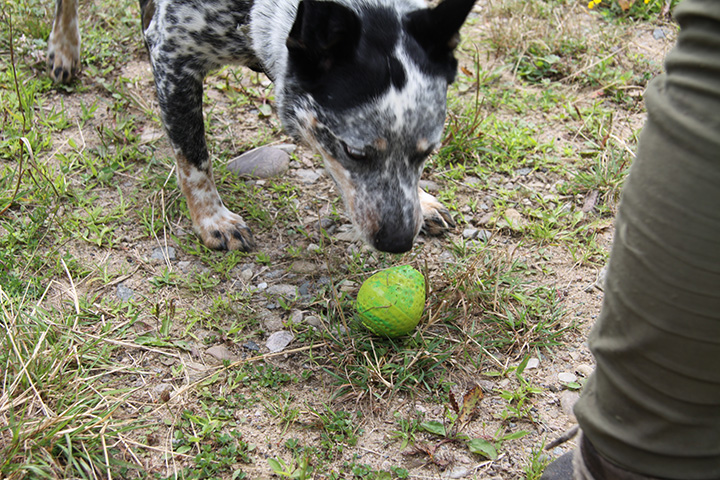 Hiccup focusing on the ball
Hiccup focusing on the ball
A day in the field for Conservation Canines and Adirondack researchers typically begins well before sunrise, especially if the team is traveling far that day. The dogs are brought to survey sites and are allowed to run off-leash along the survey lines until they find a target (moose scat). They sit at the spot and the handler meets the dog to collect samples and other data. A normal days' work is about 10 hours, but can range between six to 14 hours depending on how many targets are encountered and the difficulty of the terrain.
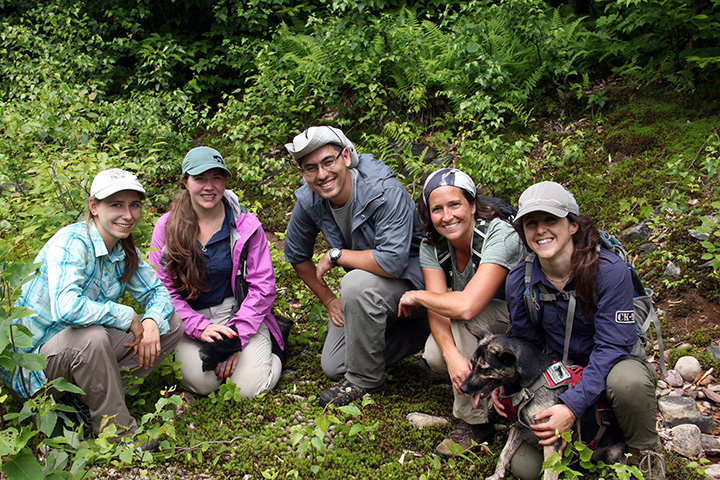 Some of the crew of Conservation Canines (L-R) Sarah Scott Cruz, Sarah Currier, Alec Wong,
Some of the crew of Conservation Canines (L-R) Sarah Scott Cruz, Sarah Currier, Alec Wong,
Angela Fuller, the dog Skye, and handler Suzie MarlowHow You Can Help
So, what can you do to help? If you see a moose in New York State, you can report it to the DEC using the form here. The New York Cooperative Fish and Wildlife Research Unit has also developed a smartphone app for reporting bear sightings along a hike or at a trail camera called iSeeMammals.
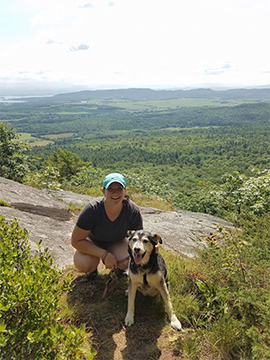
Mary joined the Council in August 2016. As the Marketing and Fund Development Assistant, Mary works with the team to coordinate marketing and fundraising efforts. She develops, manages and implements strategic social media and marketing campaigns to grow the visibility of the Council's efforts. She also works with the Fund Development team in the production of materials, mailings and reports to help expand our support to preserve the Park for future generations.
Mary grew up in Harford, NY. She is a graduate of SUNY Oswego and earned a Bachelor's of Arts degree in Public Relations in May of 2014. Previously, she has worked in digital marketing, search engine optimization, and social media management. Outside of work, she enjoys cooking, blogging, gardening, yoga, and enjoying all that the Adirondack Park has to offer.




